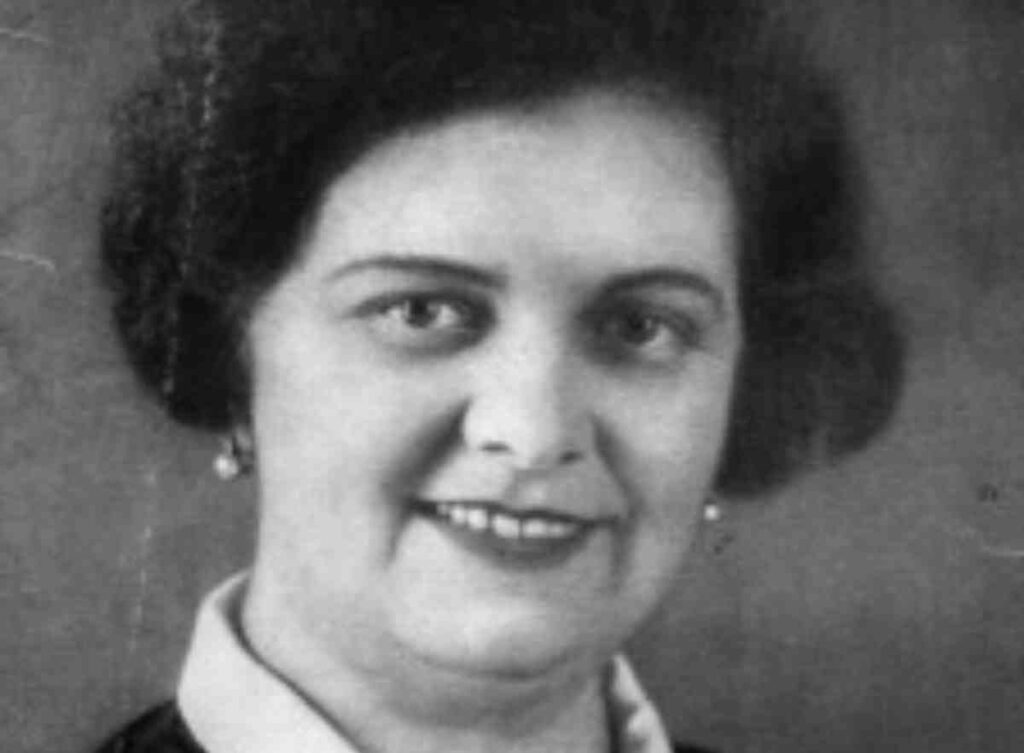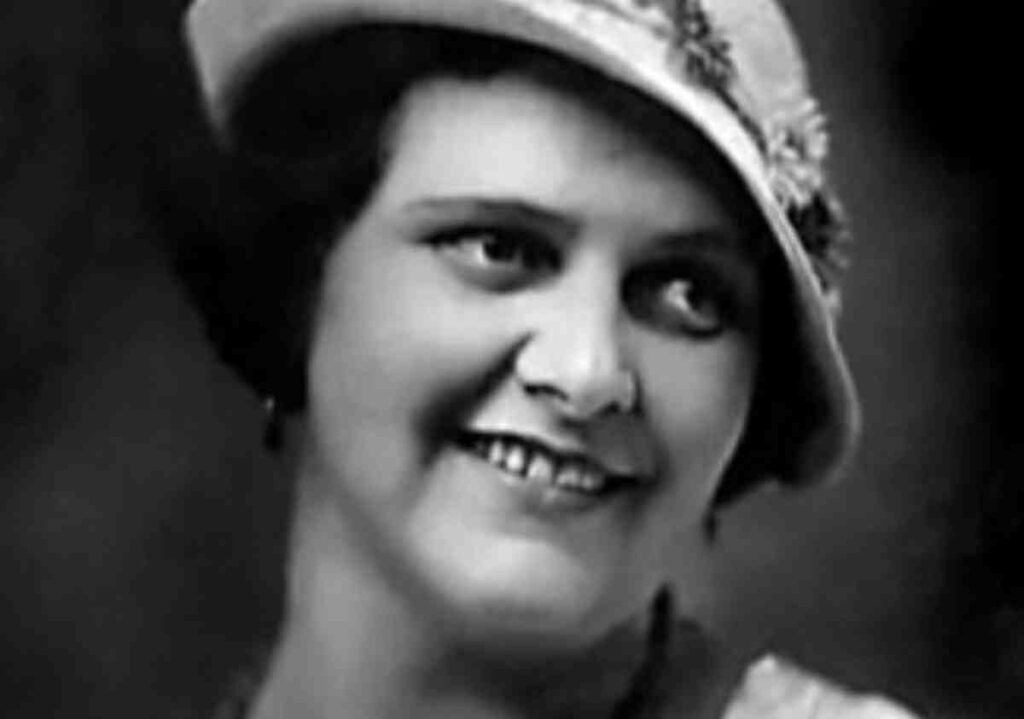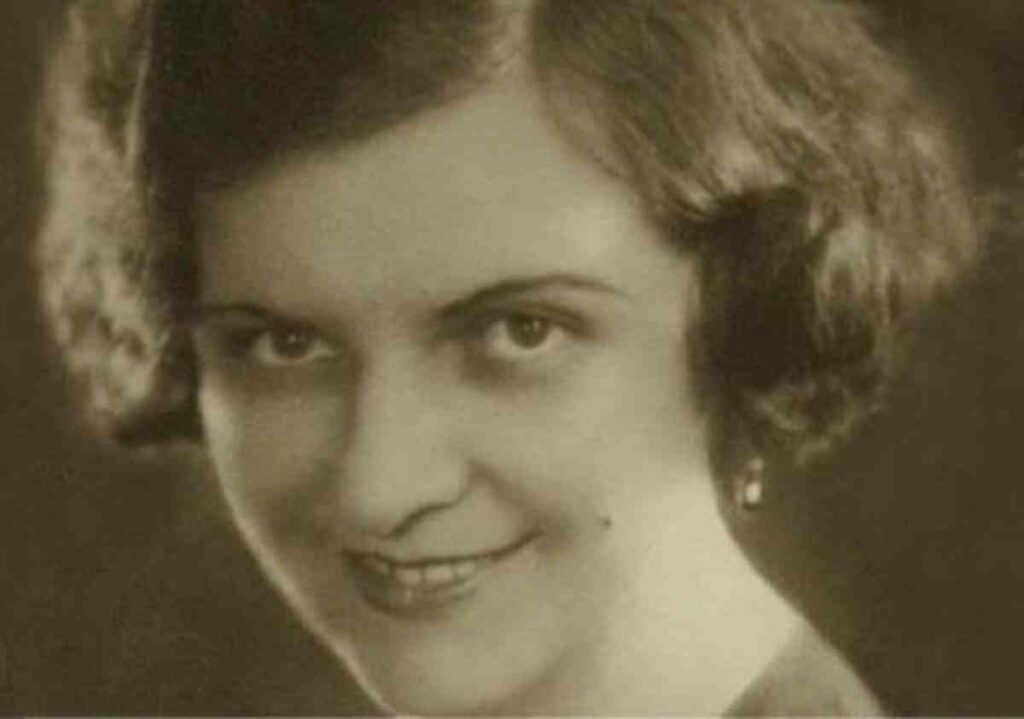The formation of the Ukrainian national opera theater is associated with the name of Oksana Andreevna Petrusenko. Only 6 short years Oksana Petrusenko spent on the Kyiv opera stage. But over the years, filled with creative searches and inspired work, she won a place of honor among such masters of Ukrainian opera art as: M. I. Litvinenko-Wolgemut, S. M. Gaidai, M. I. Donets, I. S. Patorzhinsky , Yu. S. Kiporenko-Damansky and others.

During this time, the name of Oksana Petrusenko became very popular not only in Ukraine, but also abroad, where she performed in performances or concerts. The secret of her success lay in the spontaneity and sincerity of her performance, in the lively feeling with which Oksana Andreevna was able to convey the beauty of a folk song, the depth of feelings of opera heroines. Oksana Petrusenko had the talent to evoke noble excitement in the audience, to warm people's hearts.
Childhood and youth of the actress Oksana Petrusenko
Ksenia Borodavkina was born on February 18, 1900 in Balaklava (near Sevastopol). Her father, Andrei Borodavka, was from Malaya Balakliya, Kharkov region. He got to Sevastopol thanks to his service as a sailor in the Black Sea Fleet, where his last name was rewritten to Wartkin. Xenia's mother, Maria Kuleshova, was from the Oryol province.
It was from her father, who had a beautiful voice, that Ksenia received the talent of a singer. Although the girl practically did not know her father. In the spring of 1901, he died of tuberculosis. Mother remarried, but the new husband drank heavily. From the age of 14, Ksenia worked every day in the port of Sevastopol, sang in the church choir and at amateur concerts. At 18, she ran away from home with Stepan Glazunenko's music and drama troupe. Thus began her touring life.
Two months later, in a soldier's overcoat and large soldier's boots, Ksenia appeared in the Kherson theater, which was headed by Ivan Sagatovsky. He accepted the girl into the troupe. His wife (Ekaterina Luchitskaya) undertook to teach the young actress the basics of behavior on stage. Having no special education, she studied the parts from the opera Zaporozhets beyond the Danube (S. Gulak-Artemovsky) and Natalka Poltavka (N. Lysenko) by ear. She performed as a soloist-performer of folk songs. She also mastered the complex part of Tamara in the last act of the opera The Demon (by A. Rubinstein).
The beginning of the creative path
Leaving Sevastopol with one of the mobile Ukrainian troupes, Oksana Andreevna in the fall of 1918 joined the team of the State Ukrainian Drama Theater, which was directed by I. L. Saratovsky. It was an important stage in the artist's creative life.
In the theater, she found real friends and mentors, learned the solid practical foundations of stagecraft. Here her musical and vocal abilities developed. I. L. Saratovsky and the head of the corpse K. L. Luzhitskaya Oksana considered teachers and maintained warm relations with them. P. P. Boychenko (theater conductor) systematically studied parts with Petrusenko.
He wholeheartedly imbued his talented student, and after a while she became his wife. But the marriage did not last long due to frequent quarrels and disagreements regarding creativity. In 1920, Oksana Andreevna, as part of the troupe of I. L. Saratovsky, went with concerts to the Perekop Front.

In 1922, she again worked in a troupe managed by I. L. Saratovsky. Interest among listeners quickly declined. Oksana Andreevna felt the need to improve her vocal skills even more. She also dreamed of serious and systematic education, so she went to Kyiv. And in 1924 she became a student of the vocal faculty of the State Music and Drama Institute. N. Lysenko.
Tour
Subsequently, Oksana Petrusenko was invited to the theater "Sower". However, in 1926 she again returned to her native theater, directed by I. L. Saratovsky. Here she often met with the coryphaeus of the Ukrainian theater P. K. Saksagansky, who came here on tour. The great artist watched with interest the work of young Oksana, advised her, and revealed the secrets of the mastery of realistic art.
In 1926-1927. the theater of I. L. Saratovsky toured in large cities on the Volga - Saratov, Samara, Kazan, etc. For her, this is a new test of creative forces. In Saratov, Oksana Andreevna had interesting meetings with professional figures of the opera house. One of them is the famous conductor Ya. A. Posen, the second is the operatic tenor M. E. Medvedev. Both Medvedev and Posen are people who are stingy with praise and incapable of giving compliments. But, having listened to Oksana Andreevna in several performances, the artists did not hold back their emotions or compliments on her talent. They advised Petrusenko to go to the opera stage, where she could show the richness of the operatic voice.
Oksana Petrusenko: Opera Career
During the theater's tour in Kazan, Oksana Petrusenko accepted the offer of the leadership of the Kazan Opera Theater to sing the part of Oksana in the opera Cherevichki (P. Tchaikovsky). After a successful debut, she joined the theater.
From that moment began the "opera" period of Petrusenko's theatrical activity. It ended with her return to the Ukrainian stage as an already recognized master of opera. The acquaintance of Oksana Andreevna with the artist V. D. Moskalenko belongs to the Kazan period, whom she soon married. At first, V. D. Moskalenko helped the singer a lot in her vocal studies.
From 1927 to 1929 Oksana Andreevna sang many different opera parts on the Kazan stage. Among them were the parts of Aida from the opera Aida (D. Verdi). As well as Lisa and Tatyana from the operas The Queen of Spades and Eugene Onegin (P. Tchaikovsky), etc. From 1929-1931. the artist performed on the stage of the Sverdlovsk Opera.
In 1931, the artist moved to Samara, where she worked at the opera house until 1934. The singer's repertoire included a significant number of roles from classical and Russian operas. The artist of the Ukrainian Drama Theater became a professional singer. Oksana Andreevna's transition to the Ukrainian opera stage was natural and legitimate.
In 1934, the capital of Ukraine was transferred from Kharkov to Kyiv. And the best artistic forces of Ukraine were attracted to the opera house, Oksana Petrusenko was also invited here. Her first performance in the opera Aida (D. Verdi) immediately determined the main place of the new singer in the theater troupe.

Recognition and success
On May 12, 1935, the 75th anniversary of his birth was celebrated in a festive atmosphere at the Kiev Opera House. And also the 50th anniversary of the creative activity of P.K. Saksagansky. This anniversary had a peculiar and symbolic meaning. The famous artist seemed to be passing the creative baton to the young Ukrainian opera house. The first and third acts of the opera Natalka Poltavka were presented at the anniversary evening.
The role of Vozny was played by P. K. Saksagansky and A. M. Buchma, the role of Natasha was played by M. I. Litvinenko-Wolgemut and O. A. Petrusenko, the role of Vyborny was played by M. I. Donets and I. S. Patorzhinsky. From that moment on, the name of Oksana Andreevna Petrusenko shone next to the names of famous masters of the Ukrainian opera scene.
Less than 10 years have passed since the creation of the Kyiv Opera House, when in March 1936 the young team demonstrated the achievements of the art of Soviet Ukraine in the first decade in Moscow. The Kievans showed three performances on the stage of the Bolshoi Theater: "The Cossack beyond the Danube" (S. Gulak-Artemovsky), "Natalka Poltavka" (N. Lysenko) and "The Snow Maiden" (N. Rimsky-Korsakov). The opera singer is busy in three concerts - in the parts of Daria, Natalia and Kupava, different in character. The artist was given the opportunity to show her rich stage talent and vocal abilities.
The popularity of the artist
The performances of the singer in ten-day performances attracted the attention of the musical community to her. She became a welcome guest in the concert halls of Leningrad, Moscow and other cities. The leadership of the Bolshoi Theater offered Oksana Andreevna to go to the Moscow stage. But after some hesitation, she decided not to leave the Kiev theater, with which she felt connected.
In the last years of her life, the famous actress was active. She prepared several new roles, among which were: Leah in the opera Shchors (B. Lyatoshinsky), Lushka in the opera Virgin Soil Upturned (I. Dzerzhinsky) and Natalia in the opera Into the Storm (T. Khrennikova). The artist gave concerts in the Donbass, in mobile theaters in the cities of Ukraine. The singer with a special predilection helped the development of children's amateur performances and amateur performances of the Soviet army.
She kept in touch with famous composers, willingly performed their songs. The artist was a frequent guest of the writers' club. During a propaganda trip to Western Ukraine in 1939, Oksana inspiredly sang the song "My Ukraine, Ukraine" (music - D. Pokrass, lyrics - V. Lebedev-Kumach). The composition became very popular, people demanded its performance at every concert. Oksana Andreevna sang it unaccompanied at the final meeting of the People's Assembly in Lvov. There it was decided to reunite Western Ukraine with the Ukrainian SSR.
The death of the singer
The last concerts of the unsurpassed opera diva took place in Lvov, where in June 1940 the Theater of Opera and Ballet named after. T. G. Shevchenko of the city of Kyiv.
On July 15, 1940, the life of Oksana Petrusenko suddenly ended. The second pregnancy of the singer became fatal for her. On July 8, 1940, in Kyiv, she gave birth to a son, Alexander, and died suddenly a week later. The official version is a blood clot that suddenly “broke off”. There were rumors that the cause of death was poisoning. The wife of Marshal Timoshenko, who became interested in the singer and wanted to take her to Moscow, bribed the nurse, fearing that her husband would leave her.
Oksana Petrusenko: Interesting facts
When her associates and patrons were declared enemies of the people, the director of the theater, Yanovsky, during interrogations, said that Oksana Petrusenko was going on tour to Italy. And maybe not only on tour. This accusation was then damning. Oksana decided not to wait for her doomsday. She took the rope and made a loop. Colleague Alla found her with a noose around her neck. Begichev. On the same night, the two women secretly went to Moscow. There is a version that Voroshilov defended his beloved singer. She was reinstated at work.
Despite the envy of girlfriends with education, there were no seats in the hall at the performances with the participation of Petrusenko. The opera diva was friends with Pavel Tychina, Maxim Rylsky, Vladimir Sosiura. Made patronage of the then unknown artist Ekaterina Bilokur. She received a postcard from Stalin. She did not accept the invitation to move to Moscow and become a soloist of the Bolshoi Theater.
The Ukrainian period of the difficult creative path of Oksana Petrusenko was not easy - national glory with great danger. At that time, Marshal Semyon Timoshenko commanded a special military district in Kyiv. It is unlikely that he was a real theatergoer. In Stalin's times, there was a tradition in the party elite - to choose mistresses among singers or actresses. Then Marshal Timoshenko was constantly next to Oksana Petrusenko. There were bouquets of red roses, an ever-loving look from the audience. There is no information that the artist accepted the courtship of a military official.
Despite her talent and big name, Oksana Petrusenko remained a simple and sincere woman. She revealed to the world the talent of Ekaterina Bilokur. The original artist, having heard a folk song performed by Oksana Petrusenko on the radio, wrote her a letter asking for help, including several of her drawings. Oksana gave this letter to the specialists of the Central House of Folk Art. And a commission came to Ekaterina Bilokur, and after a while Paris was already fond of her paintings.
Funeral
On July 17, 1940, the funeral procession stretched for several kilometers. Oksana Petrusenko was buried at the Baykove cemetery in Kyiv, next to the church. When she was taken out of the opera house on the day of the funeral ceremony, Kyiv met her with loud applause, as in her lifetime. A crowd of unprecedented size followed the folk prima donna to the Baikove cemetery in a huge wave. The "Ukrainian Nightingale" fell silent, and conversations and disputes continued. In 2010, on the facade of the Sevastopol Academic Russian Drama Theater. Lunacharsky, a memorial plaque was opened. Within two months it was smashed by vandals.



